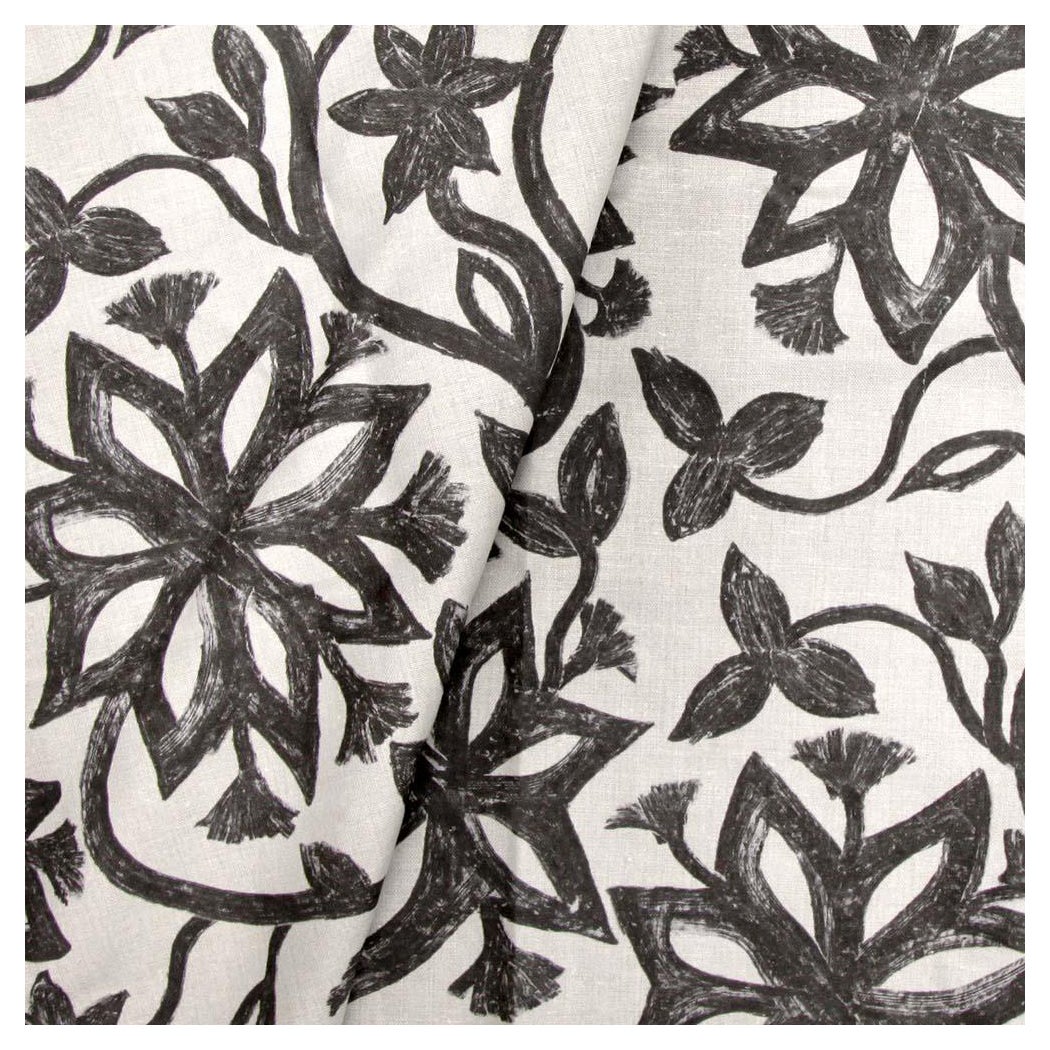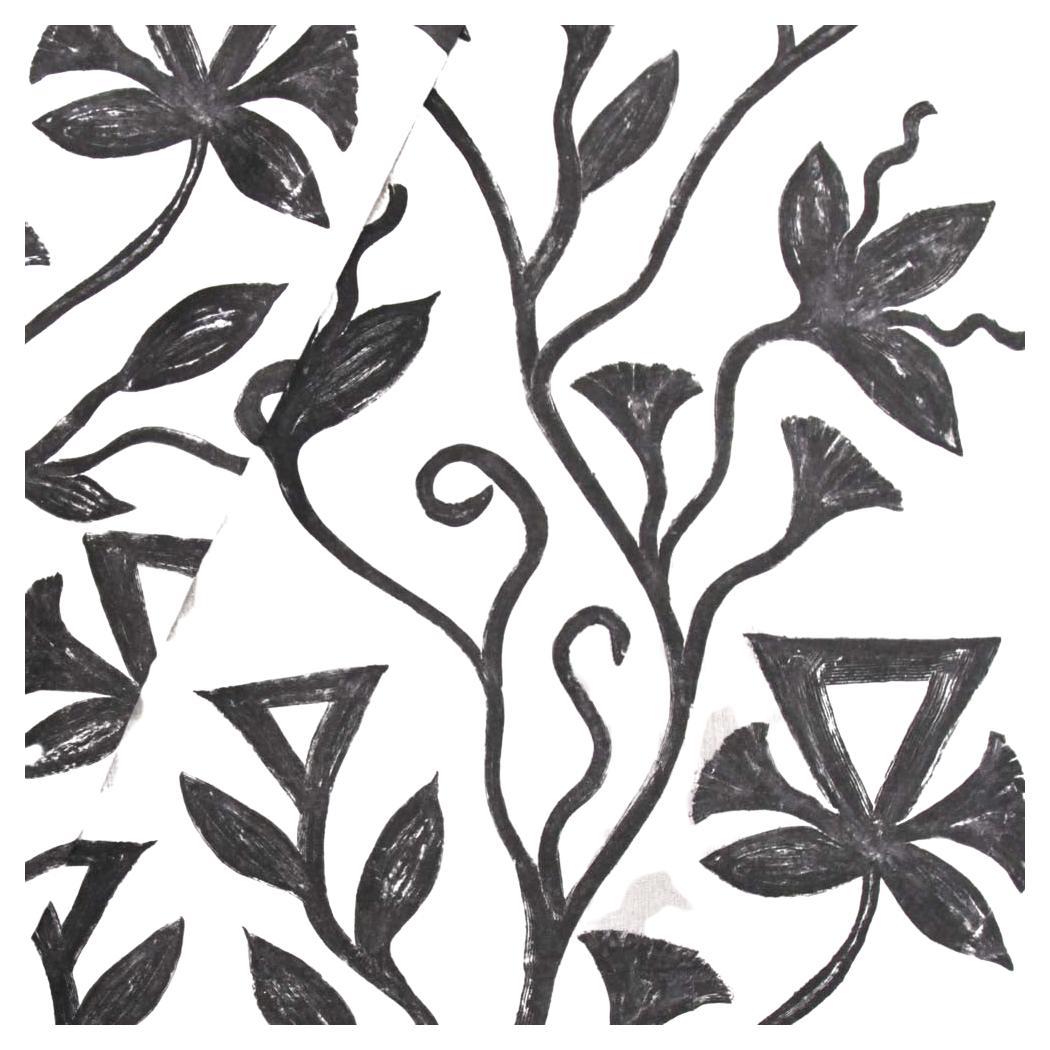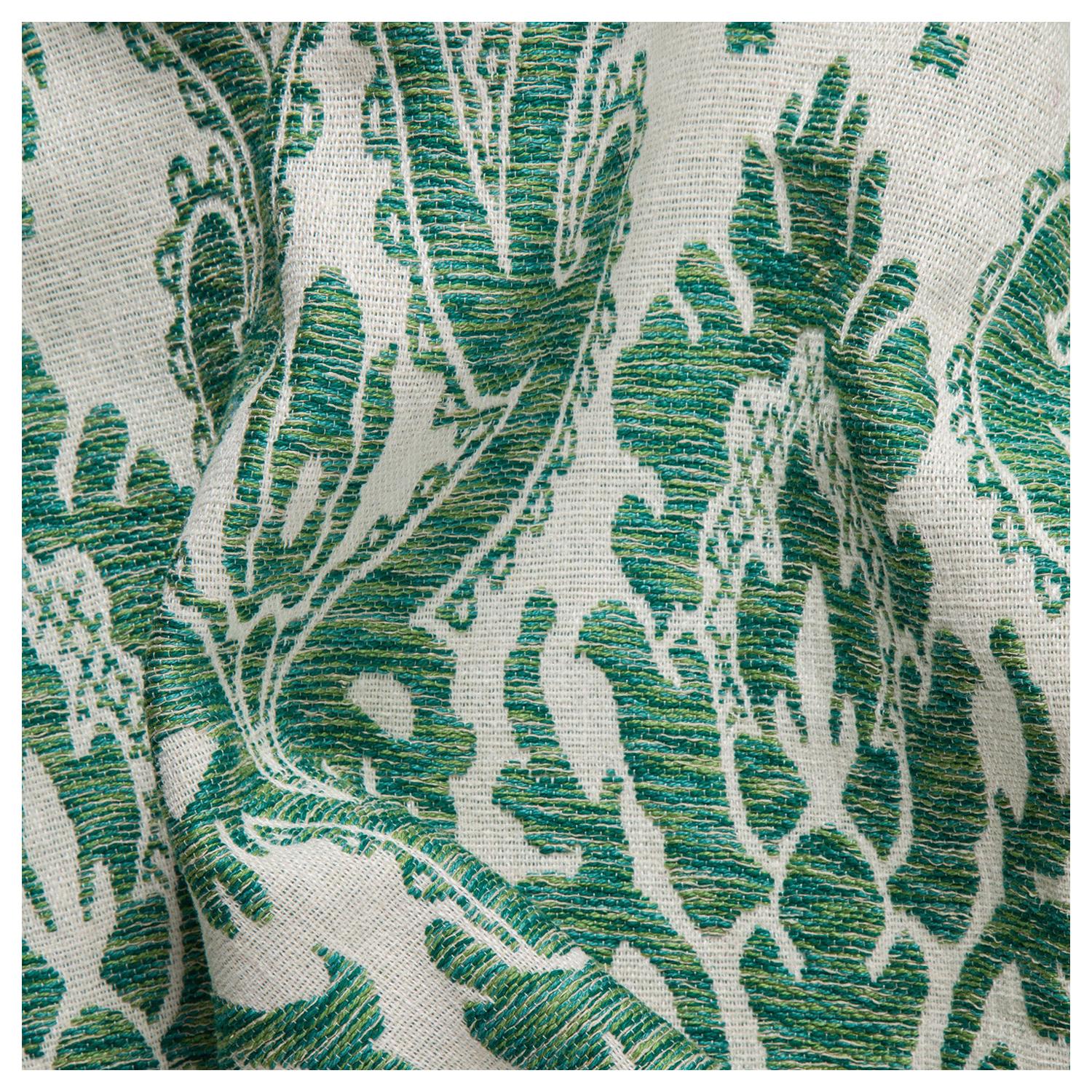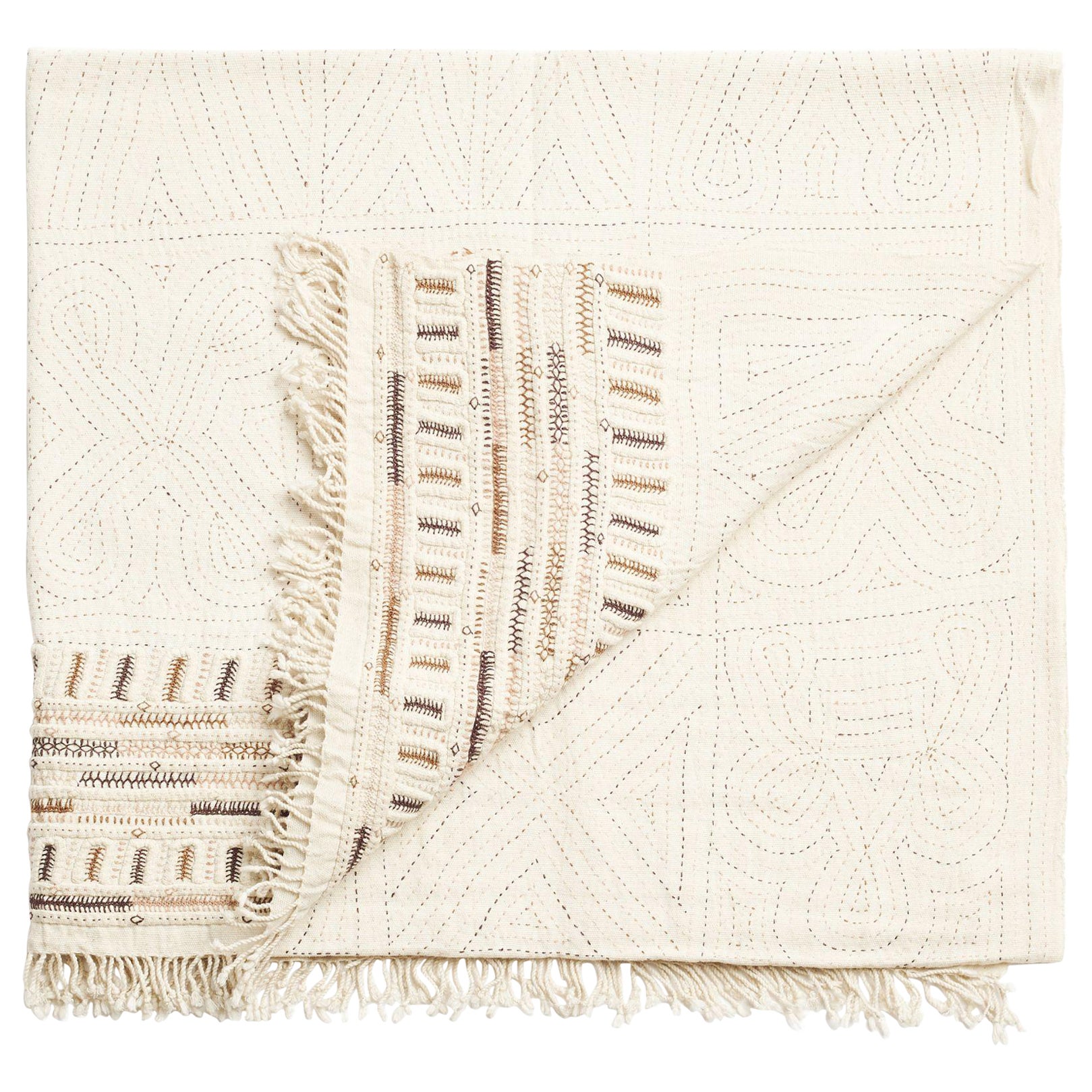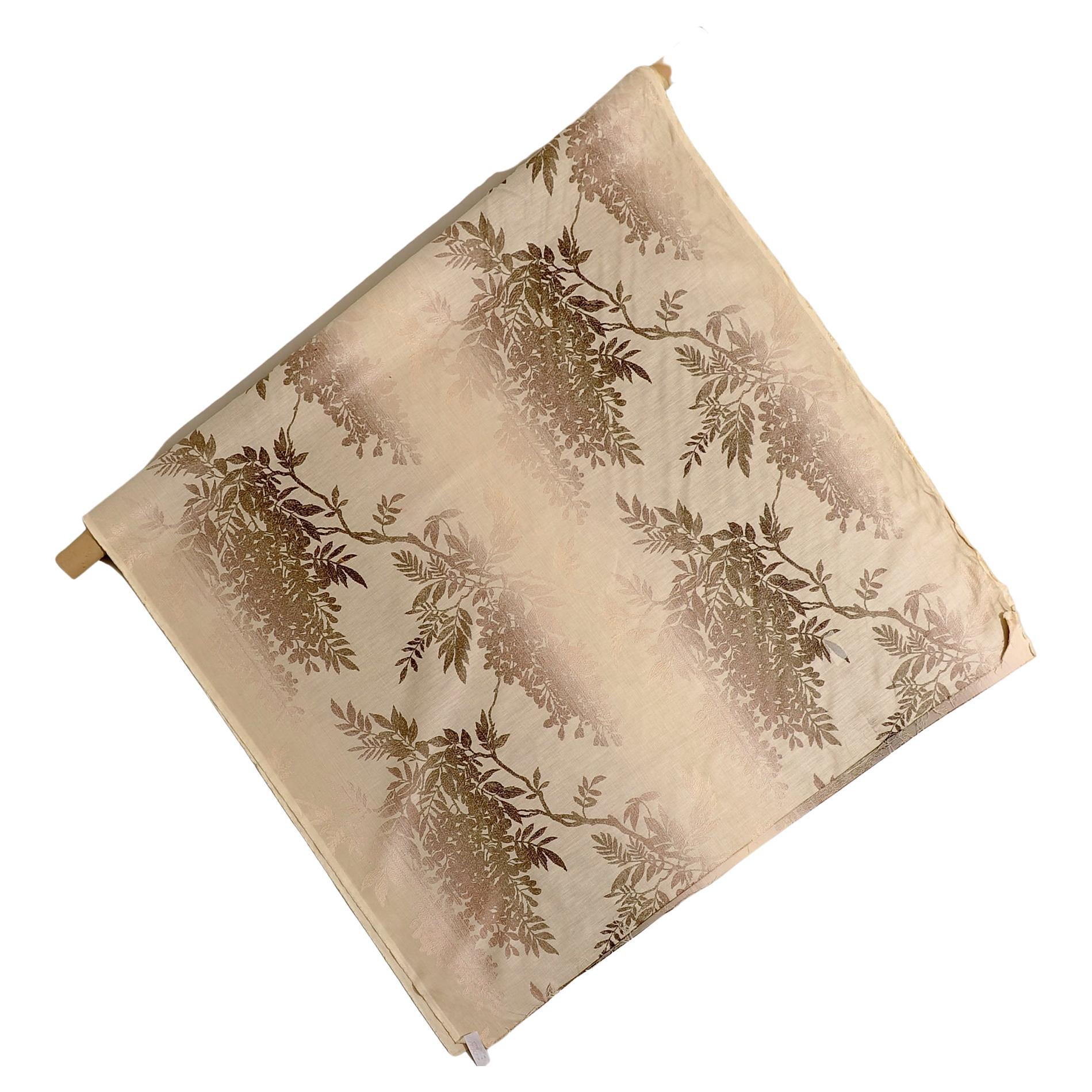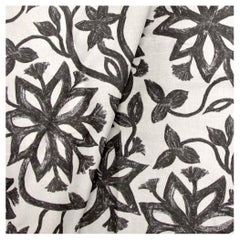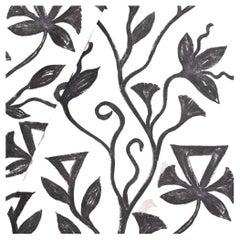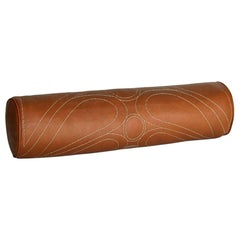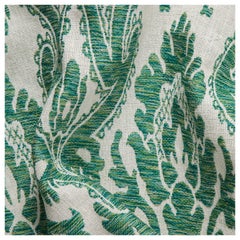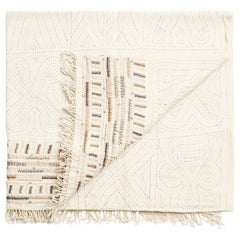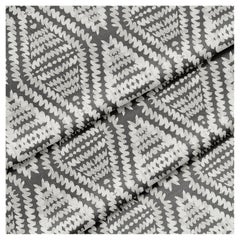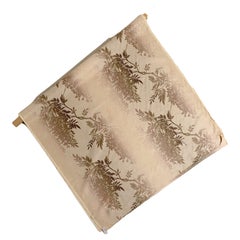Items Similar to Oatmeal Linen, Khovar Collection, Leaf (Fabric by the yard)
Want more images or videos?
Request additional images or videos from the seller
1 of 5
Oatmeal Linen, Khovar Collection, Leaf (Fabric by the yard)
$150per item
£113.27per item
€130.59per item
CA$211.71per item
A$233.37per item
CHF 122.11per item
MX$2,863.43per item
NOK 1,537.15per item
SEK 1,437.48per item
DKK 974.78per item
Quantity
About the Item
This collection takes its lead from the tribal villages of Hazaribagh in Northeastern India, where the walls of the villages’ mud homes are decorated with rambling, figurative murals. A canvas of dark charcoal earth is first laid down and left to dry, and then covered with a pale kaolin clay; before the top layer dries, women in the villages brush away the lighter earth with a broken comb or fingers to create lyrical silhouettes.
The mural-painting is part of a matrimonial ritual for the women which takes place every spring during the marriage season. Fleeting in nature, each year the murals are washed away with the heavy monsoon rains – and then once again started anew.
Drawn to the exaggerated scale and the boldness of the Khovar designs, we commissioned women in the villages to do three paintings for us (leaf, vine, flower) – which we have translated into a collection of fabrics and wallpapers.
Our partners in this collection, the women from The Tribal Women Artists Cooperative (TWAC), receive a commission for each yard sold.
Leadtime 2-3 weeks.
DETAILS
REPEAT DIMENSIONS
26” h x 38.5” v
66cm h x 98cm v
WIDTH DIMENSIONS
54”
137cm
MATERIALS
100% heavyweight linen
LEADTIME
2-3 weeks
- Creator:L'Aviva Home (Designer)
- Dimensions:Height: 26 in (66.04 cm)Width: 54 in (137.16 cm)Depth: 38.5 in (97.79 cm)
- Style:Anglo-Indian (In the Style Of)
- Materials and Techniques:
- Place of Origin:
- Period:
- Date of Manufacture:2025
- Production Type:New & Custom(Current Production)
- Estimated Production Time:2-3 weeks
- Condition:
- Seller Location:New York, NY
- Reference Number:1stDibs: LU4126145333062
About the Seller
5.0
Recognized Seller
These prestigious sellers are industry leaders and represent the highest echelon for item quality and design.
Established in 2010
1stDibs seller since 2018
405 sales on 1stDibs
Typical response time: 1 hour
- ShippingRetrieving quote...Shipping from: West Chester, PA
- Return Policy
Authenticity Guarantee
In the unlikely event there’s an issue with an item’s authenticity, contact us within 1 year for a full refund. DetailsMoney-Back Guarantee
If your item is not as described, is damaged in transit, or does not arrive, contact us within 7 days for a full refund. Details24-Hour Cancellation
You have a 24-hour grace period in which to reconsider your purchase, with no questions asked.Vetted Professional Sellers
Our world-class sellers must adhere to strict standards for service and quality, maintaining the integrity of our listings.Price-Match Guarantee
If you find that a seller listed the same item for a lower price elsewhere, we’ll match it.Trusted Global Delivery
Our best-in-class carrier network provides specialized shipping options worldwide, including custom delivery.More From This Seller
View AllOatmeal Linen, Khovar Collection, Flower (Fabric by the yard)
By L'Aviva Home
Located in New York, NY
This collection takes its lead from the tribal villages of Hazaribagh in Northeastern India, where the walls of the villages’ mud homes are decorated with rambling, figurative murals...
Category
21st Century and Contemporary Indian Anglo-Indian Textiles
Materials
Linen
Oatmeal Linen, Khovar Collection, Vine (Fabric by the yard)
By L'Aviva Home
Located in New York, NY
This collection takes its lead from the tribal villages of Hazaribagh in Northeastern India, where the walls of the villages’ mud homes are decorated with rambling, figurative murals...
Category
21st Century and Contemporary Indian Anglo-Indian Textiles
Materials
Linen
Talabartero Collection Saddle Lamps Set of Leather Samples
By L'Aviva Home
Located in New York, NY
Talabartero Collection Saddle Lamps Leather Samples
The lamps in this collection are inspired by Colombia’s equestrian heritage, layered with a jewel-ton...
Category
21st Century and Contemporary Colombian Mid-Century Modern Lanterns
Materials
Leather
Leather Bolster Pillow, Embroidered, in Camel — Talabartero Collection
By L'Aviva Home
Located in New York, NY
The leather poufs and pillows in this collection are inspired by the equestrian heritage of Colombia’s coffee growing region. Talabartero translates as ‘master saddler’—and the collection draws upon the expert craftsmanship and Fine detailing—the stitching, the braiding, the embroidery, and the hand tooling—that characterize the best of vintage saddles from the area.
We’ve partnered with master craftsman Edgar Beltran Jaramillo and the skilled team in his Bogotá-based workshop to bring this collection to life.
Each piece is crafted from a saturated jewel-toned color palette that draws on the works of Colombian artist...
Category
21st Century and Contemporary Colombian Mid-Century Modern Pillows and T...
Materials
Leather
Black Ceramic Table Lamp Oatmeal Linen Shade, Barro Bruñido
By L'Aviva Home
Located in New York, NY
This collection is shaped from clay sourced from the Sierra Madre mountains in Oaxaca. Local legend holds that the clay is blessed.
Before firing, each piece is meticulously burnish...
Category
21st Century and Contemporary Mexican Mid-Century Modern Table Lamps
Materials
Clay, Linen
Leather Floor Lamp, Camel, Doma, Saddle Lamp Collection
By L'Aviva Home
Located in New York, NY
The lamps in this collection are inspired by Colombia’s equestrian heritage, layered with a jewel-toned color palette that takes inspiration from the works of
Colombian artist Ferna...
Category
21st Century and Contemporary Colombian Mid-Century Modern Table Lamps
Materials
Brass
You May Also Like
Fabric 1700 Hand Loom Brocade Gordigiani Pattern, Florence, Italy
By Antico Setificio Fiorentino Srl.
Located in Florence, IT
This is a hand woven brocade fabric. It is woven on an original hand loom from the 1700s. The Gordigiani pattern belongs to the Antico Setificio Fiorentino archives. This fabric can ...
Category
Antique Mid-18th Century Italian Curtains and Valances
Materials
Cotton, Linen, Silk
Unah White Fully Hand Embroidered Hand Woven Organic Cotton Artisanal Throw
By Studio Variously
Located in Bloomfield Hills, MI
Unah is a fully embroidered throw, with one of a kind beautiful handwork highlighting the borders in colorful tones. Behind this piece is a unique group of artisan women in India. Th...
Category
2010s Indian Organic Modern Pillows and Throws
Materials
Cotton, Yarn
$319 Sale Price / item
20% Off
Diamond Wave Fabric by the Yard in Color Cream Sold in 3 Yard Set
Located in Rye, NY
Diamond wave is a natural geometric pattern. Inspiration for this pattern was drawn from one of Sara’s original water color paintings. ...
Category
2010s American Pillows and Throws
Materials
Polyester
Beige and Brown Textile Fabric by Luciano Marcato
Located in Alessandria, Piemonte
That's a beautiful fabric from the famous Luciano Marcato. Good for a sofa cover because very resistant and elegant.
Its price is interesting because I want to close my activities
Category
21st Century and Contemporary Italian Other Quilts and Blankets
Materials
Cotton
Antique Linen embroidery from Europe, Early 20th C.
Located in Istanbul, TR
A squarish linen embroidery , probably , early 20th C. French.
Category
Early 20th Century French Suzani Pillows and Throws
Materials
Linen
Oversized Rug & Kilim’s Modern Nepalese Rug with Beige & Cream Textural Patterns
By Rug & Kilim
Located in Long Island City, NY
Hand-knotted in wool and silk, this 13x21 smart work both contemporary and textural from Nepal, features variations in color and a boucle-like texture which lend a fabulous sense of ...
Category
2010s Nepalese Modern Central Asian Rugs
Materials
Wool, Silk
$33,600 Sale Price
20% Off
Free Shipping
More Ways To Browse
India Textile Art
Fabric Yard
Indian Clay
Antique Chinese Robe
Brocade Kimono
Ikat Textile From Sumba
Indonesia Horse
Japanese Futon
Framed Japanese Textiles
Sumba Textile
Vintage Silk Bedspread
Batik Java
Chinese Silk Embroidered Panel
Vintage Embroidered Tablecloth
Gold Japanese Wedding Kimono
Sumba Ikat
Japanese Obi Sash
Vintage Batik Indonesia
